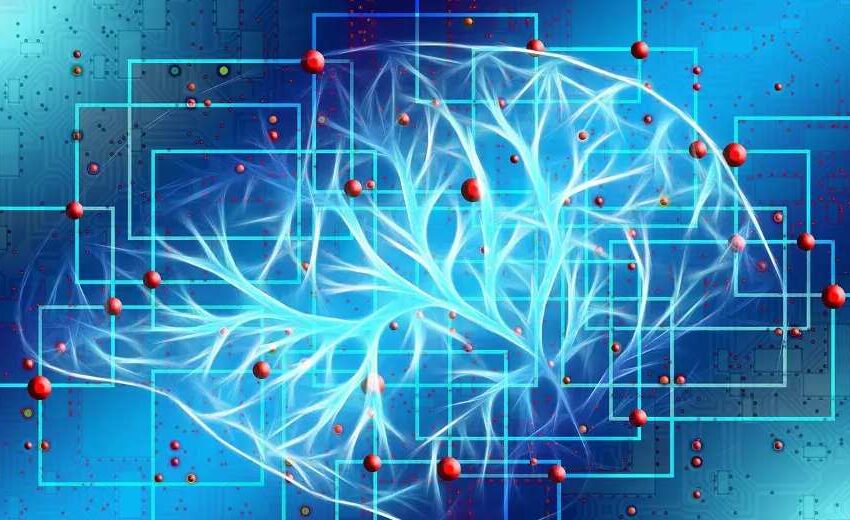Introduction to AI and Its Rapid Development
Artificial Intelligence (AI) has rapidly evolved from a futuristic concept to a ubiquitous presence in our daily lives. From virtual assistants like Siri and Alexa to sophisticated data analytics tools, AI is reshaping how we live, work, and interact with technology. The future of AI holds even more transformative potential, promising to revolutionize industries, enhance human capabilities, and introduce new ethical and societal challenges. This article delves into the emerging artificial intelligence trends and predictions that will shape our future, providing a comprehensive overview of what to expect from this dynamic field.
Emerging AI Trends
AI’s continuous development is driven by advancements in several key areas, each contributing to its growing influence and application.
1. Machine Learning (ML)
Machine learning, a subset of AI, focuses on the development of algorithms that allow computers to learn from and make predictions based on data. As data becomes more abundant and computational power increases, ML is becoming more sophisticated and capable. Trends in ML include:
- Automated Machine Learning (AutoML): Simplifying the process of building and deploying ML models, making it accessible to non-experts.
- Federated Learning: Enabling models to learn from data distributed across multiple devices without compromising privacy.
2. Natural Language Processing (NLP)
Natural language processing enables machines to understand and generate human language. NLP advancements are leading to more intuitive and effective interactions between humans and machines. Key trends include:
- Conversational AI: Enhancing chatbots and virtual assistants to provide more natural and context-aware interactions.
- Sentiment Analysis: Improving the ability of machines to interpret and respond to human emotions.
3. Computer Vision
Computer vision allows machines to interpret and process visual information from the world. Innovations in this field are enabling new applications across various industries. Trends include:
- Image Recognition: Enhancing accuracy in identifying objects, faces, and scenes in images.
- Augmented Reality (AR): Integrating digital information with the physical world, creating immersive
The Future of AI: Trends and Predictions
Introduction to AI and Its Rapid Development
Artificial Intelligence (AI) has rapidly evolved from a futuristic concept to a ubiquitous presence in our daily lives. From virtual assistants like Siri and Alexa to sophisticated data analytics tools, AI is reshaping how we live, work, and interact with technology. The future of AI holds even more transformative potential, promising to revolutionize industries, enhance human capabilities, and introduce new ethical and societal challenges. This article delves into the emerging artificial intelligence trends and predictions that will shape our future, providing a comprehensive overview of what to expect from this dynamic field.
Emerging AI Trends
AI’s continuous development is driven by advancements in several key areas, each contributing to its growing influence and application.
1. Machine Learning (ML)
Machine learning, a subset of AI, focuses on the development of algorithms that allow computers to learn from and make predictions based on data. As data becomes more abundant and computational power increases, ML is becoming more sophisticated and capable. Trends in ML include:
- Automated Machine Learning (AutoML): Simplifying the process of building and deploying ML models, making it accessible to non-experts.
- Federated Learning: Enabling models to learn from data distributed across multiple devices without compromising privacy.
2. Natural Language Processing (NLP)
Natural language processing enables machines to understand and generate human language. NLP advancements are leading to more intuitive and effective interactions between humans and machines. Key trends include:
- Conversational AI: Enhancing chatbots and virtual assistants to provide more natural and context-aware interactions.
- Sentiment Analysis: Improving the ability of machines to interpret and respond to human emotions.
3. Computer Vision
Computer vision allows machines to interpret and process visual information from the world. Innovations in this field are enabling new applications across various industries. Trends include:
- Image Recognition: Enhancing accuracy in identifying objects, faces, and scenes in images.
- Augmented Reality (AR): Integrating digital information with the physical world, creating immersive experiences.
Predictions for AI’s Impact on Various Industries
AI’s influence is set to permeate multiple sectors, driving innovation and efficiency.
1. Healthcare
AI is transforming healthcare by improving diagnostics, personalizing treatment, and enhancing patient care. Predictions for AI in healthcare include:
- AI-Powered Diagnostics: Utilizing machine learning to detect diseases such as cancer and diabetes early through image and pattern recognition.
- Personalized Medicine: Tailoring treatments based on individual genetic information and health data, improving outcomes and reducing side effects.
- Robotic Surgery: Enhancing precision and reducing recovery times through AI-assisted surgical procedures.
2. Finance
In the financial sector, AI is revolutionizing the way businesses operate and interact with customers. Key predictions include:
- Fraud Detection: Using AI to identify unusual patterns and prevent fraudulent transactions in real-time.
- Algorithmic Trading: Employing AI algorithms to analyze market data and execute trades at optimal times, maximizing returns.
- Customer Service: Enhancing customer interactions through AI-powered chatbots and virtual assistants that provide 24/7 support.
3. Transportation
AI is driving significant advancements in transportation, making it safer, more efficient, and environmentally friendly. Predictions for AI in transportation include:
- Autonomous Vehicles: Developing self-driving cars and trucks that reduce accidents and improve traffic flow.
- Traffic Management: Implementing AI systems to optimize traffic signals and reduce congestion in urban areas.
- Predictive Maintenance: Using AI to predict and address maintenance needs in vehicles and infrastructure before failures occur.
Ethical Considerations and Challenges in AI Development
As AI continues to advance, it raises several ethical and societal challenges that need to be addressed.
1. Data Privacy
AI systems often require vast amounts of data, raising concerns about privacy and data security. It’s crucial to implement robust data protection measures and ensure transparency in data usage.
2. Bias and Fairness
AI algorithms can inadvertently perpetuate biases present in training data, leading to unfair outcomes. Ensuring fairness and accountability in AI systems is essential to avoid discrimination and inequality.
3. Job Displacement
While AI can create new job opportunities, it also poses the risk of displacing workers, particularly in repetitive and manual roles. Developing strategies for workforce reskilling and supporting affected employees is critical.
Conclusion and Future Outlook
The future of AI is incredibly promising, with the potential to revolutionize industries, enhance human capabilities, and address complex societal challenges. However, realizing this potential requires careful consideration of ethical issues and proactive measures to ensure fairness and transparency. As AI continues to evolve, staying informed about emerging trends and predictions is essential for businesses and individuals alike. By embracing AI responsibly and thoughtfully, we can harness its power to drive innovation and create a better future for all.


